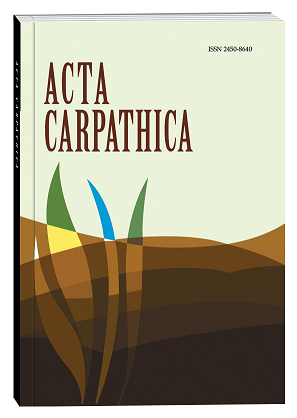MECHANISM FOR DETECTING CONTAMINANTS IN THE TRACK SENSORS
DOI:
https://doi.org/10.32782/2450-8640.2024.2.3Keywords:
track sensors, model particles, relaxation time of the carriers flow, sensor resolution ability.Abstract
Abstract. Track sensors are created on the basis of track structures, which are obtained as a result of ion implantation of thin dielectric and semiconductor films. The passage of ion currents through such structures has specific features that are studied for a long time. The entry of various types of impurities into the ion current changes the density of the current, which makes it possible to detect the small concentrations of impurities. In this work the possible mechanism of detection of foreign impurities in the environment using such sensor is considered. The effect of the characteristics of foreign particles entering the flow, as well as the structural and geometric features of the track, on the density of the “carriers flow” (CF), has been investigated. The measured dependences of the CF density on the charge of model particles in the CF and foreign particles, as well as on the defective structure of the track walls and its diameter, have made it possible to propose a mechanism for identifying various contaminants in such a track system. In the sensor, as a result of the interaction of a foreign particle with CF particles, an excited region arises, the size of which depends on the nature of this interaction. The appearance of such a region leads to the observed negative peak in the CF kinetics. The lifetime of such an excited region determines the resolution of the sensor. This lifetime depends on the diameter of the track and the defect structure of its walls. This implies the possibility of influencing the resolution of the sensor. This parameter of the device can be influenced at all stages of its manufacture. When creating a track structure, it is important to ensure a certain ion implantation mode. Accordingly, it is necessary to select the track diameter. It is important to select the charge and geometric characteristics of the particles in the CF.
References
1. Fundamentals of Ion-Irradiated Polymers. Ed. Fink, D., Springer. 2004. 406 p.
2. Renkin E.M. Filtration, diffusion, and molecular sieving through porous cellulose membranes. J. Gen. Physiol. 1954. Vol. 38. P. 225–243.
3. Donchev I.I., Kavetskyy T.S., Mushynska O.R., Zubrytska O.V., Briukhovetska I.V., Pryima A.M., Kovalchuk H.Y., Hoivanovych N.K., Kropyvnytska L.M., Pavlyshak Y.Y., Skrobach T.B., Kossak G.M., Stakhiv V.I., Monastyrska S.S., Kiv A.E. Computer model of track biosensor. Semicond. Phys. Quant. Electron. Optoelectron. 2022. Vol. 25 (4). P. 441–445.
4. Bondaruk Y., Fink D., Kiv A., Donchev I. Simulation of the passage of ion flows through nanotracks. International Journal of Advanced Computer Technology (IJACT). 2020. Vol. 9. P. 1–4.
5. Donchev I., Bondaruk Y., Fink D., Kavetskyy T., Kushniyazova M., Pan’kiv L., Kukhazh Y., Mushynska O., Zubrytska O., Vinkovskaya A., Dyachok D., Kiv A. Optimization of ion track characteristics in a track biosensor. Acta Carpathica. 2022. Vol. 2 (38). P. 31–37.
6. Vinkovskaya A., Bondaruk Y., Fink D., Kavetskyy T., Dyachok D., Donchev I., Pankiv L., Kukhazh Y., Zubrytska O., Matskiv O., Kravtsiv M., Leshko R., Hoivanovych N., Kiv A. Features of chemical etching of track structures. Acta Carpathica. 2023. Vol. 2 (40). P. 107–113.
7. Garcia Arellano H., Munoz Hernandez G., Fink D., Vacik J., Hnatowicz V., Alfonta L., Kiv A. Dependence of yield of nuclear track-biosensors on track radius and analyte concentration. Nucl. Instrum. Methods Phys. Res. B. 2018. Vol. 420. P. 69–75.
8. Bondaruk Y.V., Kavetskyy T.S., Vinkovskaya A.O., Kushniyazova M., Dyachok D.O., Pankiv L.I., Klepach H.M., Mushynska O.R., Zubrytska O.V., Matskiv O.I., Pavlovskyy Y.V., Voloshanska,S.Y., Monastyrska S.S., Bodnar L.V., Kiv A.E. Improvement of new electronic materials using computer modeling. Semicond. Phys. Quant. Electron. Optoelectron. 2023. Vol. 26 (4). P. 470–474.
9. Donchev I., Fink D., Vinkovskaya A., Kavetskyy T., Kushniyazova M., Dyachok D., Bondaruk Y., Pan’kiv L., Kukhazh Y., Mushynska O., Zubrytska O., Matskiv O., Soloviev V., Kiv A. Simulation of track structures as the basis of biosensors. Acta Carpathica. 2023.
Vol. 1 (39). P. 66–72.








